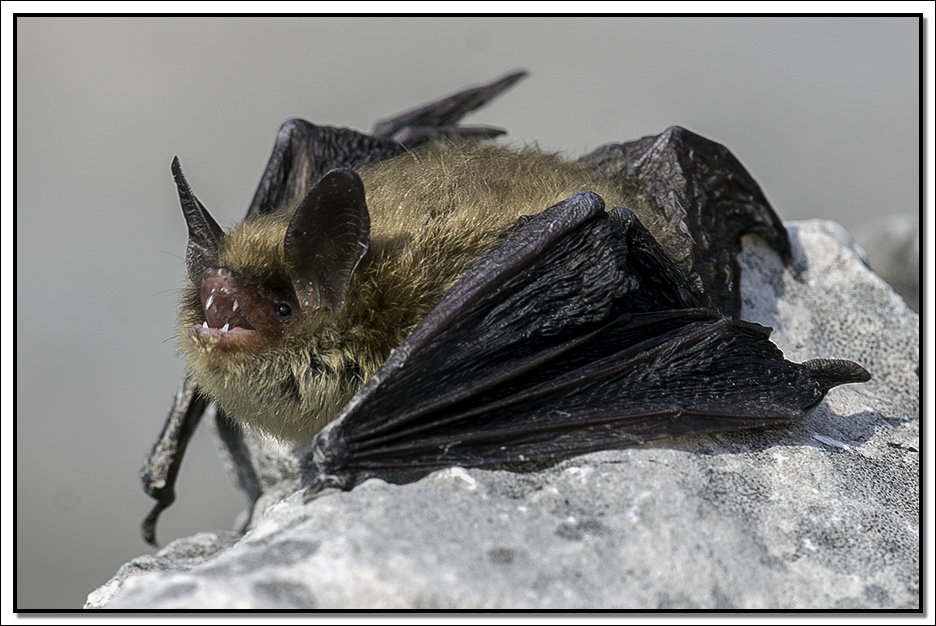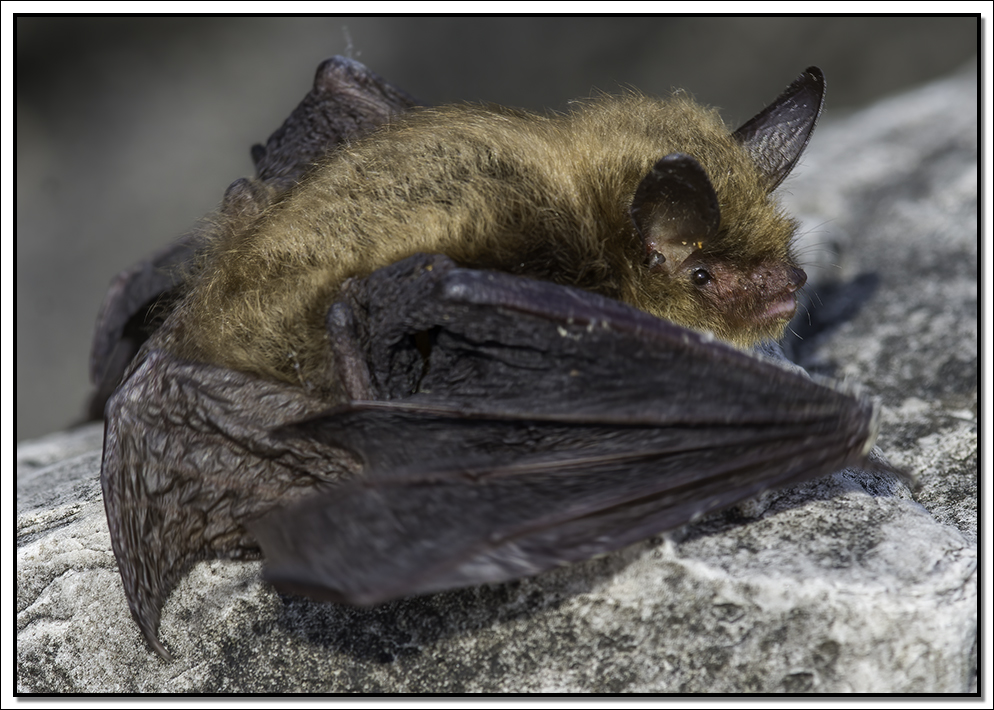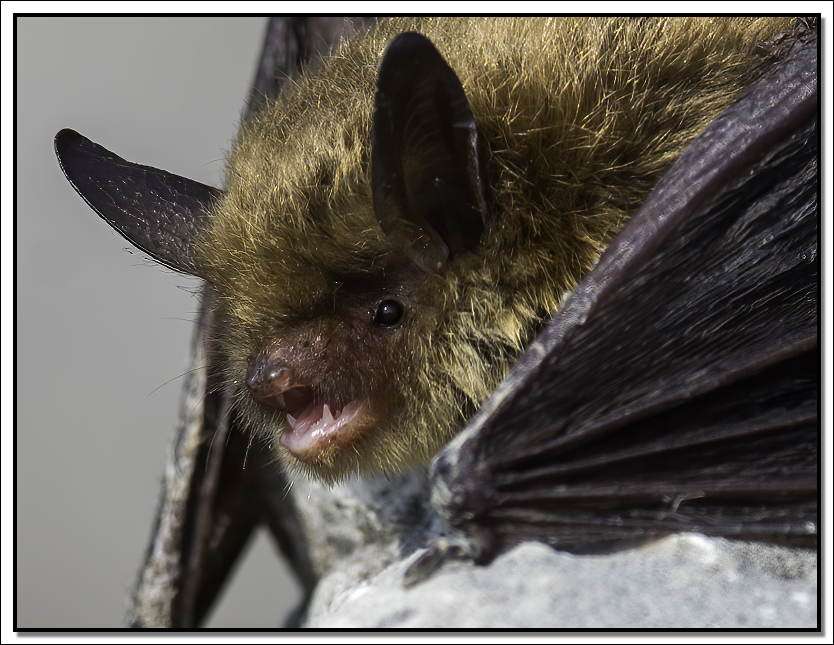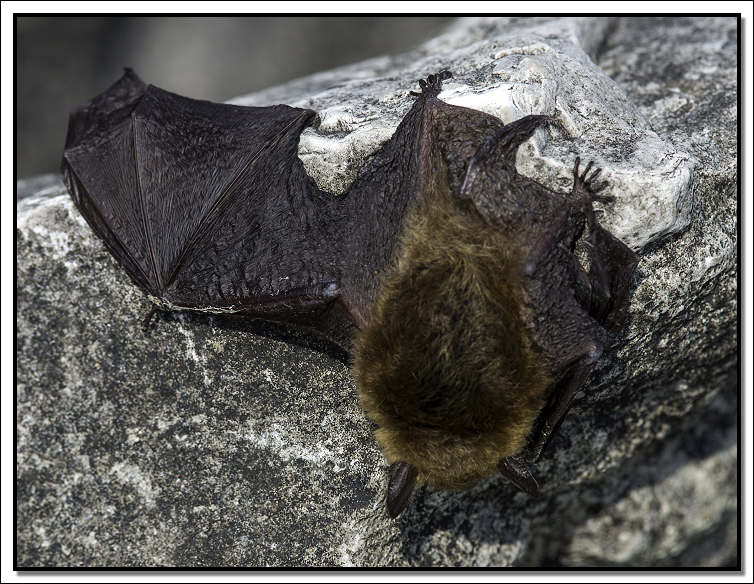BATS
Many summer evenings we sit on our back deck at dusk as the blue hour starts to fade into night. This is the time that we can get a glimpse of the nocturnal winged mammals as they flurry just above the trees and dive down into the open spaces. How bats navigate and survive in total darkness used to be a mystery, which may have contributed to why so many people were scared of them and why they became a symbol of horror stories.

With over 1400 species of bats worldwid, only eight live in Ontario. They are: the hoary bat, the eastern red bat, the silver-haired bat, the big brown bat (pictures above), the tricolored bat, the little brown myotis bat, the northern long-eared myotis and the eastern small-footed myotis.
Some bats, such as the Long-legged Myotis and Eastern Red Bat, migrate to warmer climates. Five out of the eight species of bats found in Ontario hibernate in caves and mines over winter. These non-migratory species are the ones being affected by the devastating fungus (Pseudogymnoascus destructans) which causes white nose syndrome. For Canada’s most at-risk bats — the Little Brown Bat, Tri-colored Bat and Northern Long-eared Bat — winter can be the most dangerous time of year. These species hibernate in caves where conditions are perfect for the spread of the fungus that causes White-Nose Syndrome. The fungus dehydrates the bats, causing them to wake from their hibernation, which almost certainly means death for these little mammals.
Once the cold weather arrives, bats also risk being kicked out of a warm home. If homeowners still have bats at this time of year, the bats are likely overwintering. Evicting them near winter will not give them enough time to find an alternate hibernation site, and they will freeze. The same is true in the middle of winter; bats will sometimes rouse on warmer winter days to seek water or food. If they happen to leave through a one-way door, they’ll be stuck out in the cold.
Habitat loss and pesticide use produce an added threat to already stressed populations.

As insectivores, bats in Canada are extremely beneficial as they capture and eat an incedible amount of insects. For example, Little Brown Myotis bat will consume 50% of their body weight every night. A nursing bat must consume over 100% of their body weight daily to survive; thats about 5,000 mosquitoes!

What we know now is that bats emit high pitched clicks and use the echoes from nearby objects to determine the location, distance and movements of such objects. These clicks are silent to us as the frequency is far above the upper limit of humans. Their system is actually quite sophisticated with different sound patterns and frequencies and it is astonishing that their brains can unscramble and interpret the information to accurately pin point a tiny flying insect. .

Bats are the only flying mammal. The acheived this by adapting their forelimbs as wings which are actually long fingers covered with a thin membrane giving them the power of flight with manoeuvering abilties far greater than any bird. Their small hind feet are used to cling on objects and for hanging head down wear they roost.